AGENDA – LECTURE DAY (October 15)
Recalcitrant chronic rhinosinusitis (CRS) and aggressive clinical variants of the disease such as nasal polyposis, Samter’s triad and eosinophilic mucus CRS are particularly challenging to manage, even in the hands of experienced otolaryngologists. In this era of novel biologic medications, numerous consensus statements have emphasized the importance of adequately complete endoscopic sinus surgery early in the management algorithm of nasal polyposis. Advances in endoscopic sinus surgery technique and ancillary procedures, and our understanding of the disease process have led to improved success rates for surgery in the management of severe disease.
The aim of this course is to teach advanced techniques in endoscopic sinus surgery, including frontal recess dissection and drillout, medial maxillectomy, with the aim of increasing the surgical skills of participating surgeons.
- Review endoscopic and radiologic sino-nasal anatomy, as well as pathophysiologic concepts of various common nasal diseases;
- Become familiar with the management of sino-nasal pathology, including the latest medical therapies as well as advanced ESS techniques, including the surgical steps of each technique;
- Be able to discuss the indications and contraindications of advanced ESS techniques;
- Understand and perform the surgical management of complications of ESS including CSF leak and ICA injury
- Become familiar with the instrumentation required;
- Be able to discuss the postoperative management after ESS.
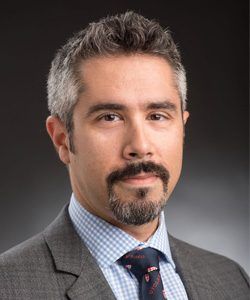
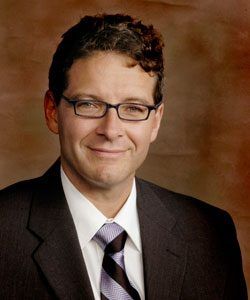
Full Clinical Professor, Université de Montréal; Head & Neck Surgery, McGill University Health Centre, Montreal, QC, Canada
Learning Objectives- Differentiate the key inflammatory endotypes (Type 2 vs. non–Type 2) of chronic rhinosinusitis (CRS) and their underlying immunopathology.
- Apply current classification schemes (e.g., European Position Paper [EPOS] vs. JESREC) to stratify CRS patients for tailored management.

Assistant Professor, Department of Otolaryngology-Head & Neck Surgery, University of Manitoba; St. Boniface General Hospital; Winnipeg, MB, Canada
Learning Objectives- Select and optimize treatments regimens based on CRS phenotype and severity.
- Incorporate advanced topical delivery techniques and novel medical options including biologic agents into practice.

Consultant Ear, Nose and Throat Surgeon, Duchy Hospital, Truro, Cornwall and Royal Cornwall Hospital NHS Trust, United Kingdom
Learning ObjectivesBy the end of this session, participants will be able to
- Develop a standardized preoperative protocol (medical optimization, imaging review, anesthesia considerations) to minimize intraoperative risk.
- Implement evidence-based postoperative care pathways (saline irrigations, topical steroids, debridements) to enhance mucosal healing and outcomes.
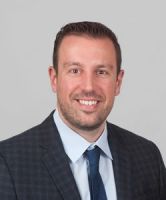
Head & Neck Surgeon, Dalhousie University, Halifax, NS, Canada
Learning ObjectivesBy the end of this session, participants will be able to:
- Describe the “Full-House” FESS framework, including techniques for maxillary antrostomy, ethmoidectomy, sphenoidotomy, and frontal sinusotomy.
- Identify patient- and disease-specific factors that guide decision-making for comprehensive versus targeted FESS.
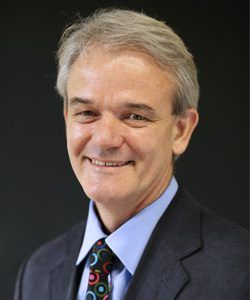
Chairman of the Dept. Otolaryngology Head & Neck Surgery, Adelaide University, Adelaide, Australia
By the end of this session, participants will be able to
- Correlate high-resolution CT/MRI landmarks with endoscopic anatomy, emphasizing danger zones (skull base, lamina papyracea) and frontal sinus drainage pathways.
- Identify high-risk anatomical variants (Onodi cells, Haller cells, concha bullosa) that impact surgical planning and risk.
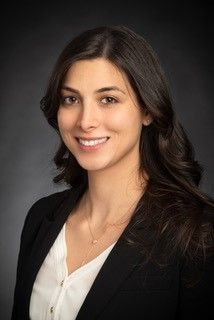
Assistant Professor, Division of Otolaryngology – Head and Neck Surgery at McMaster University; Rhinologist and Skull Base Surgeon at Hamilton Health Sciences; Hamilton, ON, Canada
Learning ObjectivesBy the end of this session, participants will be able to
- Employ advanced hemostatic strategies to maintain a clear field.
- Discuss preoperative and intraoperative measures to optimize operating conditions.
- Adjust endoscope positioning and OR setup to reduce surgeon fatigue and enhance precision.

Chairman of the Dept. Otolaryngology Head & Neck Surgery, Adelaide University, Adelaide, Australia
Learning ObjectivesBy the end of this session, participants will be able to
- Compare endoscopic frontal recess surgical techniques and recognize indications for the Modified Lothrop procedure.
- Execute stepwise surgical landmarks and maneuvers for safe frontal sinusotomy, minimizing risk of complications and optimizing chances of success.
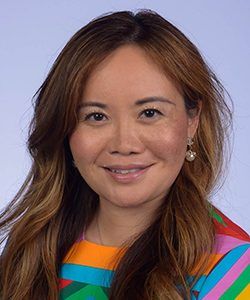
Assistant Professor and the Continuing Professional Development Director in the Department of Otolaryngology - Head & Neck Surgery, University of Toronto, Toronto, ON, Canada
Learning ObjectivesBy the end of this session, participants will be able to
- Analyze causes of surgical failure and plan targeted revision strategies.
- Integrate adjunctive therapies (biologics, topical antifungals, stenting) into the management of recalcitrant cases.

Associate Professor of Otolaryngology - Head & Neck Surgery, McGill University; McGill University Health Centre, Montreal, QC, Canada
Learning ObjectivesBy the end of this session, participants will be able to
- Review the relevant nasal anatomy
- Describe the indications for endoscopic septoplasty, including transseptal approaches to the sella turcica and for choanal atresia repair
- Outline endoscopic approaches for septoplasty and transseptal access, highlighting technical tips for successful endoscopic septoplasty
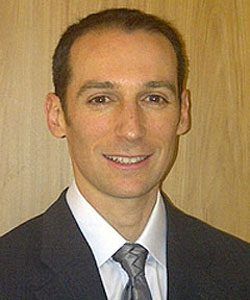
Associate Clinical Professor at McMaster University; Otolaryngologist/Head & Neck Surgeon, Hamilton, ON, Canada
Learning ObjectivesBy the end of this session, participants will be able to
- Identify endoscopic corridors and key landmarks for medial orbital decompression, and access for well-selected orbital apex lesion and middle cranial fossa.
- Anticipate and manage orbital-specific complications (orbital hemorrhage, extraocular muscle injury).

Chairman of the Dept. Otolaryngology Head & Neck Surgery, Adelaide University, Adelaide, Australia
Learning ObjectivesBy the end of this session, participants will be able to
- Recognize serious intraoperative complications (CSF leak, orbital injury, hemorrhage) and institute immediate management steps.
- Implement protocols for intraoperative care and postoperative monitoring to reduce morbidity.
Details and Learning Objectives
The frontal sinus anatomy is highly variable and often complex. As a result, it is often challenging for the sinus surgeon to master understanding of the frontal sinus.
The Frontal Sinus Master’s Class aims to help participants systematically review a variety of CT scans, from simple to complex, in all 3 planes. After reviewing the CT, the participant uses the building block method to determine the anatomy and drainage pathway of the frontal sinus.
The Course Faculty works with the participants to make and evaluate their own 3D conceptualization of the frontal sinus cells using tangible blocks, in a hands-on approach. The Course Faculty checks and provides feedback to help the participant improve their 3D Conceptualization.
Participants then compare their own 3D interpretation of the CT scan with the intra-operative video of the surgery performed on this patient, with stepwise removal of frontal sinus cells. The comparison of the participant’s 3D Interpretation and the actual surgery re-enforces their ability to use the triplanar CT images to create a 3D anatomical picture, and to formulate their own plan for surgery.
Learning Objectives for the Frontal Sinus Masterclass
- Review the nomenclature and common cellular configurations of frontoethmoidal cells that are relevant to frontal sinus surgery.
- Practice reconstructing these 3D configurations using the building blocks technique and understanding how this affects the frontal sinus drainage pathway.
- Develop a surgical plan for frontal recess dissection based on the elucidated frontoethmoidal cell anatomy.

Professor, Department of Anatomy, University of Quebec in Trois-Rivières, QC, Canada
Learning ObjectivesBy the end of this session, participants will be able to
- Differentiate patterns of olfactory loss in post-viral (including COVID-19) vs. inflammatory CRS etiologies.
- Counsel patients on evidence-based interventions (steroid irrigation, olfactory training) and set realistic recovery expectations.
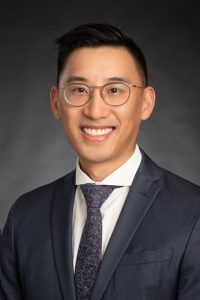
Assistant Clinical Professor, Otolaryngology – Head & Neck Surgery, McGill University; Saint-Mary’s Hospital, Montreal, QC, Canada
Learning ObjectivesBy the end of this session, participants will be able to
- Apply current indications and contraindications for anti-IL-5, anti-IL-4Rα, and anti-IgE therapies in CRS with nasal polyposis.
- Develop individualized treatment algorithms that integrate surgery, topical therapies, and biologics for optimized long-term disease control.
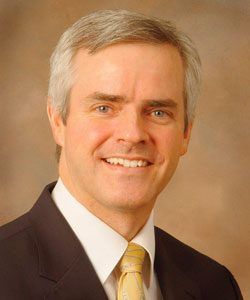
Mentorship and Metrics: Shaping Precision and Excellence in Sinus and Skull Base Surgery
Professor, Department of Otolaryngology - Head & Neck Surgery, Toronto, ON, Canada
During this session:
- Participants will explore innovative and adaptive mentorship models used to train future sinus and skull base surgeons, with emphasis on fostering autonomy, technical excellence, and professional growth.
- Attendees will gain insight into the role of surgical performance data and outcome tracking, including how to define, measure, and apply key quality indicators to improve patient care.
- This session will highlight how combining mentorship frameworks with precision-driven metrics can enhance both surgical education and clinical excellence, supporting a culture of continuous improvement.
